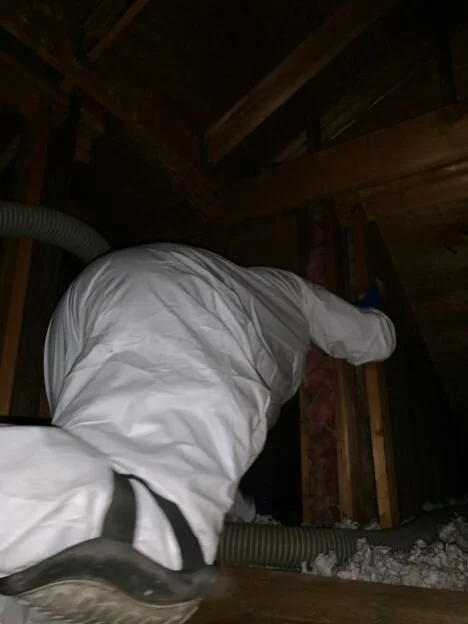Ms. Nina Nixon
The Past:
Our home was built in 1941 and placed in the backdrop of the beautiful Linden trees. The stucco walls, watching movies, going out in the backyard swinging on the swing set and eating at the picnic table with my siblings are some of my fondest childhood memories. As an adult, like most kids, I left home. Years later I’d return to take care of my aging father. For twelve years I took care of him and kept him in his home. When he died, I inherited his most precious possession. Sometimes I think that my father’s presence held this house together and when he passed, it all kind of fell apart.
The Problem:
First, the furnace went out. It may have been as old as the house but it was completely beyond repair and the roof was leaking. It was the middle of Winter and I’d been without heat for 30 days. It was thirty degrees outside and forty degrees in my home. I applied for the Home Weatherization Assistance Program with the hope that they could help me.
The Process:
Initially, my home was beyond the scope of weatherization services because of the leaking roof. Attempts to keep the house warm through electric heaters was ineffective. The cold also affected the plumbing and the water meter broke and soon some electrical issues followed. It was one of the most difficult times is my life. I was worried that if it rained the roof would leak and I had to transport water to complete basic functions in the kitchen because the water was shut off at the valve on the sink. My utility bills were increasing because I had no heat and was using electric heaters to stay warm. When the circuit breakers began to shut down, I think I did too. I could not afford to make the repairs on my own and I felt myself going downhill. That’s when I reached out again desperate for assistance.
The Progress:
My advocacy efforts earned a response from the Ohio Development Services Agency that I can truly say was music to my ears. “Ms. Nixon we are going to combine programs and resources and help repair your home.” I was more than elated. IMPACT along with a group of partners met me at my front door and put my house back together again. Day by day the activity increased at my home. One of my neighbors asked if I had hit the lottery or something because there was so much work going. My furnace was repaired and my heat restored. Someone fixed the roof, someone else fixed the water meter and repaired the plumbing. An electrician repaired the circuitry and my home was weatherized through IMPACT’s Home Weatherization Assistance Program.
The Peace of Mind:
With the repairs made to my home, I felt a sigh of great relief that I could have some normalcy again and get back to my work and life. I am so very grateful to the people who worked on my home. I realize that they are contractors and each could work for any company of their choice or in more affluent areas but if they are going to come to the heart of communities to help someone like me, it has to be a matter of the heart and not money.
In the living room to the right side of the front door is a handsome picture of my father. In it, he is smiling. I know that he would have been happy to see that this old house will remain a home.
The Partnership:
The Nixon home was a combination project between IMPACT Community Action, Warm Choice, American Electric Power and the Department of Energy, all partners provide weatherization assistance. The value of service of the combined weatherization and energy efficient repairs made to the Nixon home was $16,428. (furnace $3,411.00, power vented tank $1,680.00, electric $1375, ASHRAE fan $424.00, plumbing $4280, roof repair $5,257.00) The cost of labor was $8710.37. The value of the preservation of the Nixon home… priceless.
The Home Weatherization Assistance Program (HWAP) provides eligible Ohioans with assistance to improve the energy efficiency of their homes and reduce their energy costs. *Ohio’s HWAP is one of the highest performing low-income weatherization programs in the nation. Not only has it reduced energy consumption and corresponding bills, but it has also had an effect on payment behavior.


